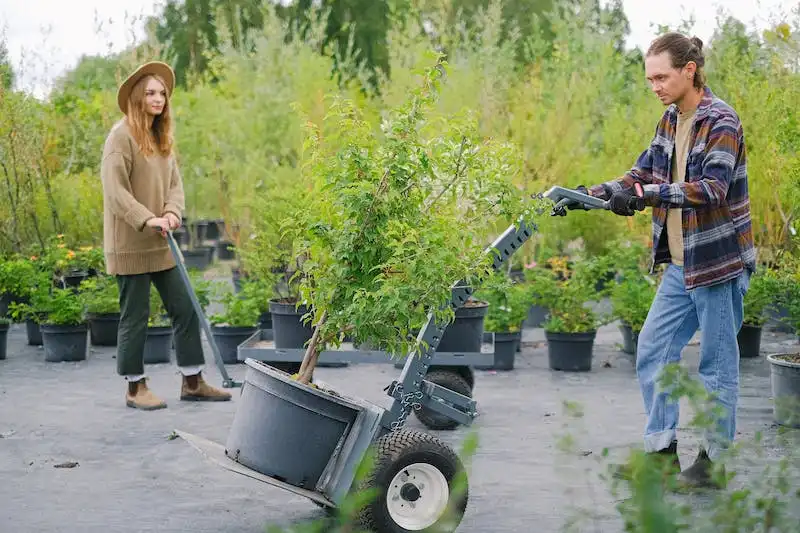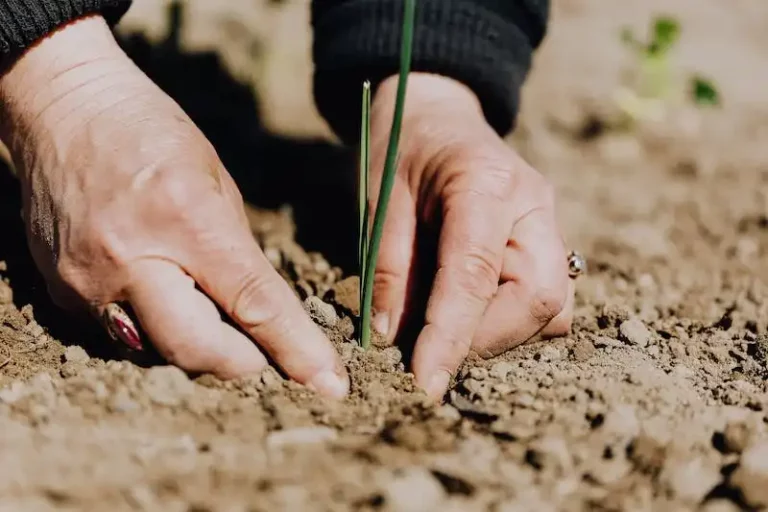When it comes to building raised garden beds, choosing the right type of wood is crucial. Not all woods are suitable for this purpose, as some may contain harmful chemicals or deteriorate quickly. However, there are certain types of wood that are naturally durable and make an excellent choice for garden beds.
One of the most popular choices for raised garden beds is cedar. Cedar is a fine-grained wood that naturally resists rot and insect attacks. It is also known for its beautiful color and pleasant aroma. Cedar is a renewable resource, and when properly maintained, can last for many years without the need for chemical preservatives or treatments.
If you prefer a white-colored wood or want to avoid the use of preservatives altogether, white oak is another great option. White oak is naturally resistant to rot and decay, making it an ideal wood for outdoor projects. It is a strong and durable wood that will stand up to the elements and provide long-lasting support for your garden.
Another alternative to consider is cypress wood. Cypress is a raw, untreated wood that is naturally resistant to rot, insects, and decay. It has a rich natural color and can last for many years without any chemical treatments. Cypress is also a sustainable choice as it is abundant in many parts of the world.
Lastly, if you are looking for a cost-effective and long-lasting wood, Douglas fir is worth considering. Douglas fir is a commonly available timber that is known for its strength and durability. It is naturally resistant to rot and decay and can withstand the test of time, even in harsh conditions. Douglas fir is a popular choice for both backyard and commercial raised garden beds.
Before making your final decision on what type of wood to use, there are a few important considerations to keep in mind. Firstly, make sure the wood is free from any chemicals or preservatives that may be harmful to your plants. Secondly, consider the thickness of the wood to ensure it can support the weight of the soil and plants. Lastly, think about the climate and weather conditions in your area to choose a wood that can withstand those factors.
With the right choice of wood, you can enjoy beautiful and productive vegetable beds for years to come. Whether you go for cedar, white oak, cypress, or Douglas fir, make sure to take the necessary precautions to preserve the wood and extend its life. By using untreated or naturally resistant wood, you can avoid the use of unnecessary chemicals and ensure a safe and sustainable source for your garden beds.
Beeswax: A Non-Toxic Wood Treatment for Your Raised Garden Bed
When it comes to selecting the best wood for raised garden beds, there are a few options to consider. While cedar and juniper are popular choices due to their natural resistance to rot and insects, some gardeners may want to explore alternative treatments to further enhance the durability and lifespan of their beds.
One non-toxic wood treatment that has gained popularity among gardening enthusiasts is beeswax. Beeswax is a heavy, raw material that can be used to preserve and protect wooden raised garden beds.
So why should you consider using beeswax to treat your wooden garden bed? Here are some tips:
1. Safety: Choosing a non-toxic treatment like beeswax ensures that you and your plants will be safe from exposure to harmful chemicals. Unlike pressure-treated or arsenic-treated wood, beeswax is a safe and natural option.
2. Preserving the wood: Beeswax can help extend the life of your wooden raised beds by preventing the wood from rotting or decaying over time. It acts as a natural sealant, protecting the wood from moisture and other environmental factors.
3. Easy application: Applying beeswax to your raised garden bed is a simple process. You can melt the beeswax and then use a brush or cloth to evenly distribute it on the wood. The wax will penetrate the wood and create a protective barrier.
4. Additional benefits: Beeswax has natural antimicrobial properties, which can help prevent the growth of mold and fungi on your garden bed. It also repels water, making it an effective treatment to keep your bed dry and resistant to rot.
When using beeswax to treat your raised garden bed, it is important to note that it may not be as long-lasting as other treatments like pressure-treated wood or cement. However, reapplying beeswax periodically can help maintain its effectiveness.
In conclusion, beeswax is a safe and effective option for treating wooden raised garden beds. Its natural properties can help preserve the wood and protect your plants, while also ensuring the safety and longevity of your garden bed.
The Best Wood for Raised Garden Beds
When it comes to choosing the best wood for your raised garden beds, there are a few important factors to consider. You want a wood that is very durable and long-lasting, ensuring the safety and longevity of your garden beds. It’s also important to choose a wood that is safe for growing vegetables.
Tung and redwood are two of the best options for raised garden beds. Tung wood is known for its durability and resistance to rot, making it an excellent choice for outdoor projects like garden beds. Redwood is another great option, as it is naturally resistant to decay and insects. Both of these woods can be easily sealed with a non-toxic sealant to ensure their longevity and safety.
When working with wood, it’s always important to take safety precautions. Wear protective gloves and goggles, and avoid inhaling sawdust. If you choose to use pressure-treated wood, make sure it is labeled as safe for vegetable gardens. Be aware that pressure-treated wood may contain chemicals that could leach into the soil and affect the plants.
If you’re looking for a non-wood alternative for raised garden beds, there are a few options to consider. Cedar and cypress are both non-toxic and naturally resistant to decay. They are also very durable and can withstand the elements without the need for preservatives. Another option is to use concrete blocks or bricks to create the bed frames.
Regardless of the wood you choose, it’s always a good idea to line your garden beds with a durable liner. This can help prevent soil erosion and extend the life of your beds. Black plastic or landscape fabric are commonly used liners that provide good protection against moisture and weed growth.
In conclusion, the best wood for raised garden beds are tung and redwood due to their durability, resistance to decay, and safety for growing vegetables. However, there are other non-wood alternatives and ways to extend the life of your garden beds. Consider all the factors and resources available to you when making your decision.
Find out which type of wood is best for your garden and what wood to avoid
When building raised garden beds, it’s important to know which type of wood is best for your garden and which wood to avoid. The type of wood you choose will depend on your specific gardening needs and preferences. Here is some additional information to help you make an informed decision.
Timber is the most popular choice for raised garden beds. It is durable, provides good insulation for plant roots, and has a natural look that blends well with the garden. There are many different types of timber to choose from, but some of the best options are cedar, cypress, and redwood. These types of wood are naturally resistant to decay and can withstand humid conditions without rotting.
On the other hand, there are some types of wood that are best to avoid when building raised garden beds. Non-wood materials, such as plastic or metal, may not be ideal for gardening as they can retain heat and cause the soil to become too hot for plant roots. Additionally, using chemically treated wooden materials, like CCA-treated pine, should be avoided. These materials contain pesticide treatments that can leach into the soil and potentially harm your plants.
If you want to build raised garden beds without using chemically treated wood, there are a few alternatives available. Untreated fir, juniper, and black locust are good options. These types of wood are naturally resistant to decay and pests, making them safe for gardening purposes. They may not last as long as chemically treated wood, but with proper care and maintenance, they can still remain sturdy for many years.
It’s important to note that using any type of wood for raised garden beds will eventually break down over time. To prevent this, you can line the inside of the beds with a thin plastic sheet or use a natural wood preservative, like linseed oil, to extend their lifespan. This will help keep the wood protected from moisture and other elements that can cause it to deteriorate.
In conclusion, when choosing the best wood for your raised garden beds, it’s important to consider factors like durability, resistance to decay, and the potential risks associated with treated wood. Opting for naturally resistant woods like cedar, cypress, or redwood is a safe choice for growing vegetables and other plants. Alternatively, using untreated fir, juniper, or black locust can also be a good option if you prefer a more eco-friendly approach. By selecting the right type of wood, you can create raised garden beds that will not only look great but also provide a healthy environment for your plants to thrive.
Key Considerations When Selecting Wood for Raised Garden Beds
When it comes to choosing the best wooden materials for your raised garden beds, there are a few important factors to consider. The type of wood you select will have a significant impact on the longevity, safety, and overall success of your garden.
First and foremost, it’s crucial to choose a wood that is both durable and long-lasting. Some of the most popular choices are redwood and cypress, as they are naturally resistant to rot and decay. These types of wood will withstand the test of time and provide a fine working surface for your plants.
However, if you’re looking for a more cost-effective option, you can also consider using pressure-treated wood. While it’s generally safe to use pressure-treated wood in your garden, make sure it is not treated with chromated copper arsenate (CCA), as this contains toxic chemicals. Instead, opt for a safer alternative, such as ACQ (alkaline copper quat) or copper azole treatments.
Another important consideration is the source of the wood. It’s best to choose wood that is sustainably sourced to ensure the environmental impact is minimized. Some homeowners even prefer to use non-wood materials, such as composite lumber or recycled plastic, for their raised garden beds.
Safety is also a top priority when selecting wood for your garden beds. Avoid using woods that have been treated with chemicals or stains that may leach into the soil and potentially contaminate your food. If you’re unsure about the safety of a particular wood, it’s best to err on the side of caution and choose a different type.
Before applying any treatments or finishes to your wood, it is important to know what you’re working with. Certain types of wood, like Douglas fir, may require an exterior wood oil or beeswax to protect against the elements. Understanding the specific characteristics of the wood you select will help you determine the best treatment to ensure its longevity.
Lastly, it’s worth considering the investment you’re willing to make in your garden beds. While higher-quality woods may initially cost more, they are often more resistant to rot and will ultimately require less maintenance and replacement. Additionally, investing in well-built timber frames or corner blocks can extend the lifespan of your garden beds even further.
In summary, when selecting wood for your raised garden beds, it’s important to prioritize durability, safety, and environmental impact. Choose a wood that is naturally resistant to rot, or opt for a safe, pressure-treated alternative. Consider the source of the wood and avoid treatments that may leach into the soil and harm your plants. Finally, evaluate the investment you’re willing to make and choose a wood that will withstand the test of time.




